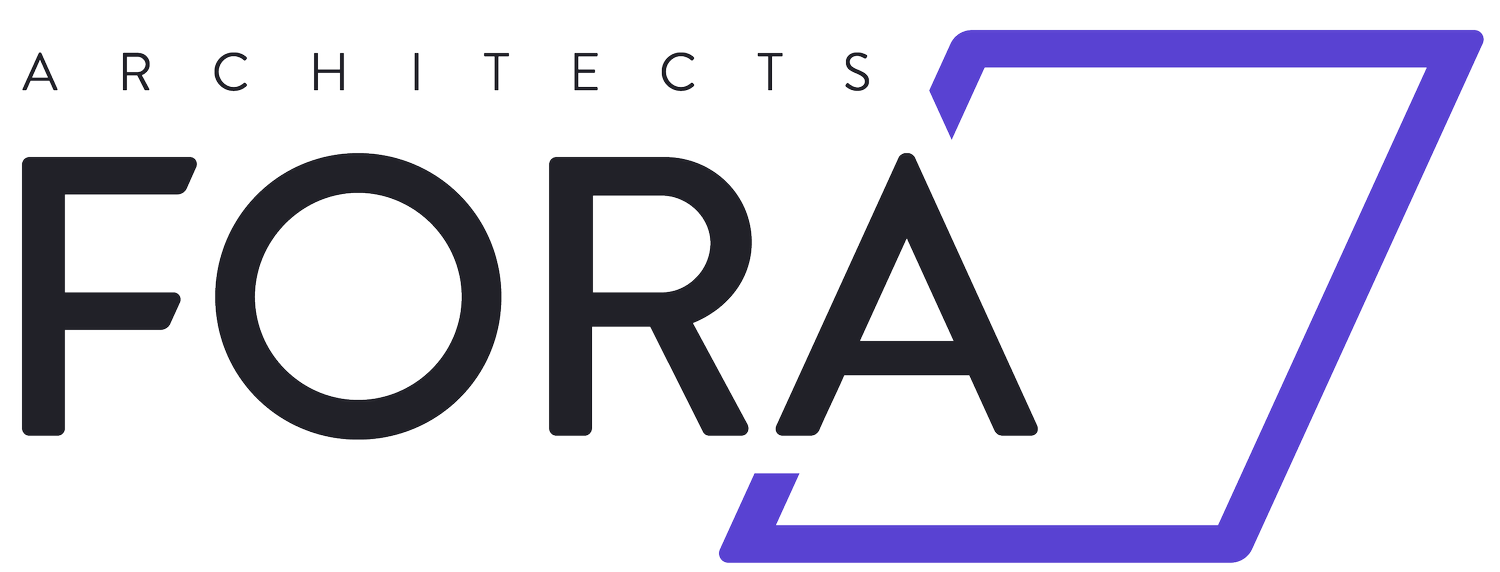Co-Creating a Sustainability Action Plan (SAP) That Will Actually Be Used
This article was written by FORA Associate and Building Performance Lead Jessica Goswick.
What is an SAP and why is it important?
According to the AIA, a Sustainability Action Plan (SAP) is “an actionable climate strategy that gives us a set of standards and goals for reaching net zero emissions in the built environment”. Basically, it’s a road map for how your firm is going to meet its sustainability goals. Developing an SAP as a firm is multipurpose:
Breaks down the big task of reducing carbon emissions into feasible chunks
Takes stock of what sustainable design practices are already in place
Helps prioritize what is most important to the firm
Brings everyone together around common goals
The AIA 2030 Commitment asks that each firm submit an SAP within the first year of signing, to outline firm-specific goals, strategies, and metrics. They have resources like this guide and examples of other firms’ SAPs to kickstart the process.
/ Developing the SAP
Sign the AIA 2030 Commitment
Our first step was to join the national movement towards net-zero carbon buildings by signing the AIA 2030 Commitment. Signing helped us connect with a nationwide network of designers working towards similar goals, and gave us access to the AIA DDx to track our progress.See what others are doing
When we started out on this process, we were starting with a blank slate. Even though our firm had 40 years of experience with sustainable design practices, we didn’t have a formalized plan or intention to refer too. So we looked towards industry resources to start.Host a workshop
After looking through the resources, we knew we wanted our SAP to be simple, actionable, true to our values….and we wanted everyone on board. For us, that meant two energizing team-wide workshops to brainstorm, set goals and strategize how our small team could meet them. The objectives for our workshops were to:Determine what our team's sustainability values and aspirations are
Start translating these abstract thoughts into our design process & portfolio
Identify our top sustainability goals and the metrics we can use to measure progress towards these goals
Compile a plan
Soon, the Miro board was overflowing with ideas, and people were excited. I compiled all the sticky notes into a draft, covering our vision, what we are doing currently, and what our goals are for the next 1, 3, and 5 years. Just a few rounds of edits later, we submitted an SAP that the whole firm had a hand in crafting.
This was our process:
/ Our Top Tips
There are TONS of resources available - guides, examples, peer Basecamp, etc. Take advantage of them. (See below for some examples)
Understand where your firm is starting and establish intention for the process - what are your firm’s unique goals for your SAP?
Set smart goals that align with your firm’s values, current knowledge, and larger design vision. What processes work well at your firm currently? How can your sustainable design goals be integrated with them? For example, at FORA we often work with repeat client and consultant teams, so we made it a goal to work with our consultants to develop a baseline energy modeling scope that we could ask for on each project.
Make sure your whole team has a seat at the table. We are all climate designers and good ideas can come from anyone. Plus, including everyone in the process helps reinforce your sustainable values and goals.
Once you have an SAP, use it! Your plan can act as a jumping off point for starting sustainability conversations both internally and externally, provide a solid set of goals to return to for each project, and guide future firm decisions.
Be open to change and identify strategies for catalyzing it. We are all learning, and your goals will probably change as you dive deeper into each of the outlined topics. As you learn, be sure to update your SAP so it evolves with you, just like a business plan.
Creating an SAP is different for every firm, but the process can help you discover what your team members are passionate about, what is already working, and how you can build better buildings for people and the planet.
You can see the results of our process here, by viewing our Architects FORA 2022 SAP.
Resources:


